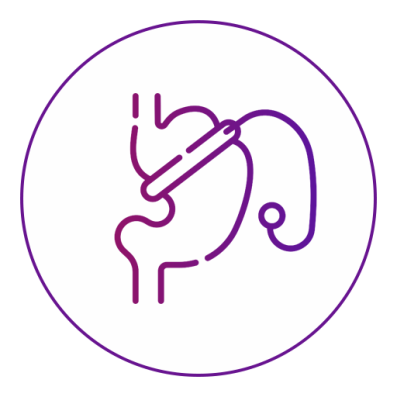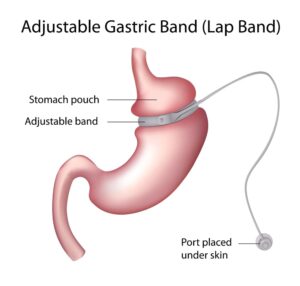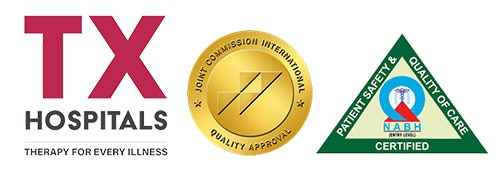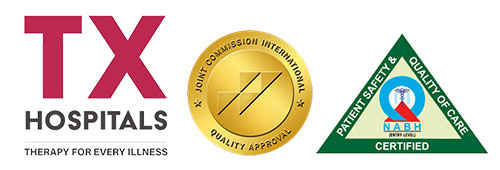Lap Band Surgery in Hyderabad

Purpose of Lap Band Surgery
Lap band surgery is typically recommended for individuals with a body mass index (BMI) of 40 or higher, which is classified as severe obesity. It is also considered for individuals with a BMI of 35-40 who have obesity-related health conditions such as type 2 diabetes, high blood pressure, or sleep apnea.
The primary goal of lap band surgery is to assist individuals in achieving significant and sustained weight loss. By reducing the amount of food that can be consumed and promoting a feeling of fullness, the procedure helps patients adopt healthier eating habits and lose excess weight over time.

How to Prepare for Lap Band Surgery
- Preparing for lap band surgery involves several steps. Initially, you will have consultations with the gastroenterologist, who will evaluate your overall health and determine if you are a suitable candidate for the procedure. You may undergo various medical tests, including blood work, imaging scans, and an evaluation of your heart and lung function.
- Prior to surgery, you will likely need to make dietary adjustments to help prepare your body for the procedure and the post-operative phase. Your gastroenterologist or a nutritionist may provide guidance on what to eat and drink, as well as any necessary weight loss targets to achieve before surgery.
- It is important to have a clear understanding of the lifestyle changes required after the procedure. This may involve discussions about dietary modifications, physical activity, and support systems that can help you navigate the weight loss journey.
More About Lap Band Surgery
- During lap band surgery, the gastroenterologist will make small incisions in the abdomen and use specialized instruments to place the adjustable band around the upper part of the stomach. The band is positioned to create a small pouch at the top of the stomach, which limits the amount of food that can pass through to the rest of the stomach.
- The adjustable nature of the band allows for customization to each patient’s needs. By accessing the port implanted beneath the skin, the gastroenterologist can inflate or deflate the band with saline solution, effectively tightening or loosening its grip on the stomach. These adjustments can be made in follow-up visits to ensure optimal weight loss results and minimize discomfort.
- Regular follow-up visits with the gastroenterologist are essential after lap band surgery. These visits allow for band adjustments, monitoring of progress, and addressing any concerns or complications that may arise. The gastroenterologist will work closely with you to determine the appropriate adjustment schedule based on your weight loss goals and overall health.
Consequences of Lap Band Surgery
While lap band surgery can be an effective weight loss solution, it is important to be aware of potential consequences and risks. These may include:
- Band Slippage: In some cases, the band may slip or move out of position, potentially leading to discomfort, difficulty swallowing, or vomiting. This may require further surgical intervention to reposition the band.
- Infection: As with any surgical procedure, there is a risk of infection at the incision sites or around the port. Prompt medical attention and proper wound care are important to minimize the risk of infection.
- Erosion: In rare cases, the band may erode into the stomach tissue, which can cause complications and may require removal of the band.
- Band Intolerance: Some individuals may experience discomfort or intolerance to the band, leading to ongoing issues with eating and digestion. In such cases, band removal may be necessary.
- Need for Additional Surgeries: Over time, adjustments to the band may be required to ensure optimal weight loss results. Some individuals may also choose to have the band removed entirely.
Frequently Asked Questions (FAQs)
Lap band surgery, also known as gastric banding, is a weight loss procedure that involves placing an adjustable band around the upper part of the stomach. The band restricts the amount of food that can be consumed, promoting a feeling of fullness and aiding in weight loss. The band can be tightened or loosened by the surgeon using a port under the skin, allowing for individualized adjustments.
Lap band surgery is typically recommended for individuals with a body mass index (BMI) of 40 or higher, or a BMI of 35-40 with obesity-related health conditions. However, each case is unique, and a thorough evaluation by a gastroenterologist or bariatric surgeon is necessary to determine if you are a suitable candidate for the procedure.
Lap band surgery can help individuals achieve significant weight loss, improve obesity-related health conditions, and enhance overall quality of life. The procedure is minimally invasive, resulting in smaller incisions, reduced scarring, and a faster recovery compared to traditional open surgeries. The adjustable nature of the band allows for personalized adjustments to optimize weight loss results.
While lap band surgery is generally considered safe, like any surgical procedure, it carries certain risks. Potential complications may include band slippage, infection, erosion, band intolerance, or the need for additional surgeries for adjustments or removal. It is important to thoroughly discuss these risks with your surgeon and follow their post-operative instructions for a successful outcome.
Lap band surgery requires commitment to long-term lifestyle changes. This includes adopting a balanced and nutritious diet, practicing portion control, and engaging in regular physical activity. Regular follow-up visits with your surgeon will be necessary to monitor progress, make adjustments to the band as needed, and receive ongoing support and guidance for sustainable weight loss.







